One of the most verbose and least credible narrators I’ve come across in recent literature, the hero of The Debt to Pleasure, one Tarquin Winot, is a total and complete food snob. He opens the book with the line “This is not a conventional cookbook,” and no, it most certainly is not. Just as Tarquin himself is not a conventional foodie, though he is highly intelligent, erudite and a horrible egomaniac. Here’s one of my favorite of his lines that tells you who you’re dealing with: “I myself have always disliked being called a ‘genius’. It is fascinating to notice how quick people have been to intuit this aversion and avoid using the term.”
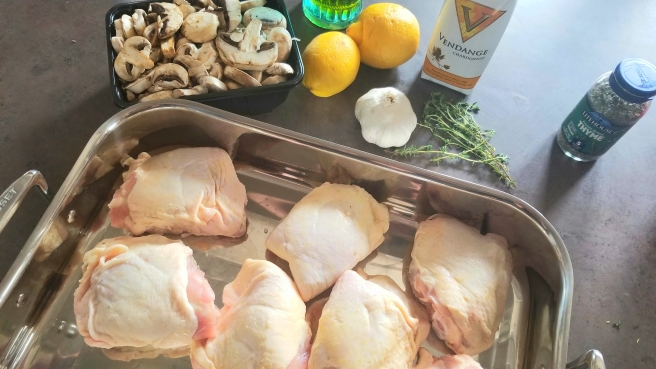
Reading this book was a bit of a slog for me, though I enjoyed it thoroughly, because of the sheer amount of long, run on sentences and wordiness of each chapter. The book is broken into seasonal chapters, opening with Tarquin giving a few suggested menus for Spring, Winter, Summer and Fall…..though not in that order. I was put in mind of Nigella Lawson’s first book How To Eat, where she talks about the concepts of French cooking and how they informed modern British palates and food. Tarquin is an Englishman currently living in France, and as the story gradually unfolds, you start to see the dark and sinister undertone to his words. Little by little, you realize exactly who he is and what he has done. It’s a lovely slow burn.
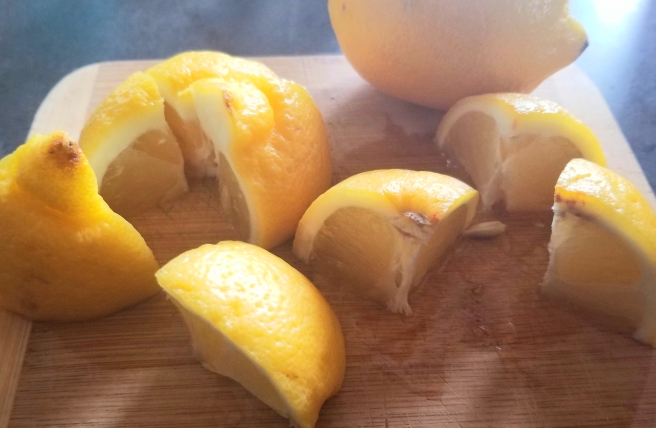
He is a food philosopher, beyond anything else. When talking about seasonal food and what is appropriate for spring, he waxes philosophical on the theme of lamb and how it ties in with the concepts of rebirth, sacrifice and why it’s eaten both in the springtime and around Easter. This is not new for any foodie or student of history, but his greatly entertaining way of expressing himself makes reading about the blood of the lamb so very unique.
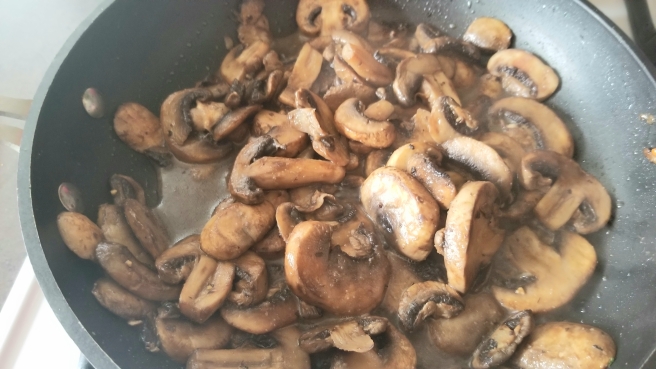
He waxes rhapsodically about the delights of food in such a delicious, mouthwatering way that you can’t help but feel your tummy growl in response. He is also the biggest prick when it comes to everything and anything else, as evidenced by this zinger: “I could forgive her many things, but his Welshness is hard to bear.” Ouch! Also, hilarious! But it was this passage that enticed me into making a delectable chicken dish that I got from Nigella herself, coming directly after his musings about lamb in springtime and how certain culinary constructs lend themselves very well to certain and specific food pairings:
“These combinations have a quality of a logical discovery: bacon and eggs, rice and soy sauce, Sauternes and foie gras, white truffles and pasta, steak-frites, strawberries and cream, lamb and garlic, Armagnac and prunes, port and Stilton, fish soup and rouille, chicken and wild mushrooms; to the committed explorer of the senses, the first experience of any of them will have an impact comparable to an astronomer’s discovery of a new planet.”

INGREDIENTS
12 organic chicken thighs, skin on and bone in
2 large lemons
1 large head of garlic
1 cup white wine (I used chardonnay)
3-4 tablespoons olive oil
4 tablespoons dried thyme
Several sprigs of fresh thyme
Sea salt and cracked black pepper
METHOD
Heat the oven to 375F and lay the room-temperature chicken pieces into a large baking tray. I got to use one of my Christmas gifts for this dish – my gorgeous stainless steel Le Creuset roasting pan!
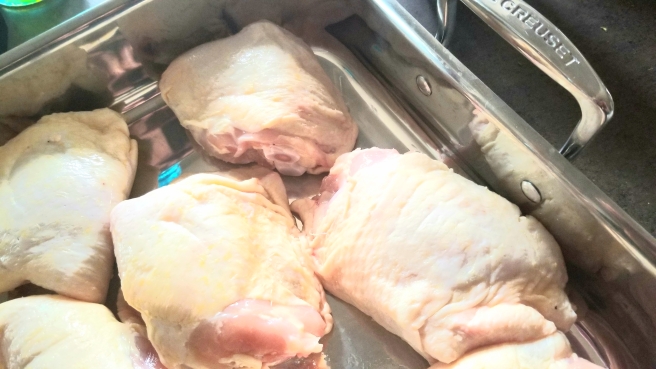
Quarter the two lemons and tuck them in and around the chicken pieces.
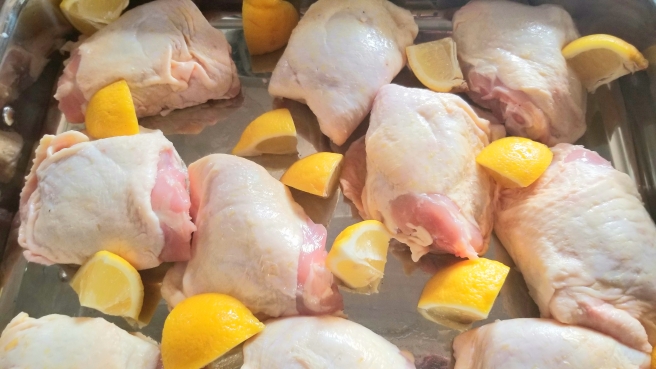
Break the garlic cloves from the head – leaving them unpeeled – and dot them around the chicken and lemon chunks.
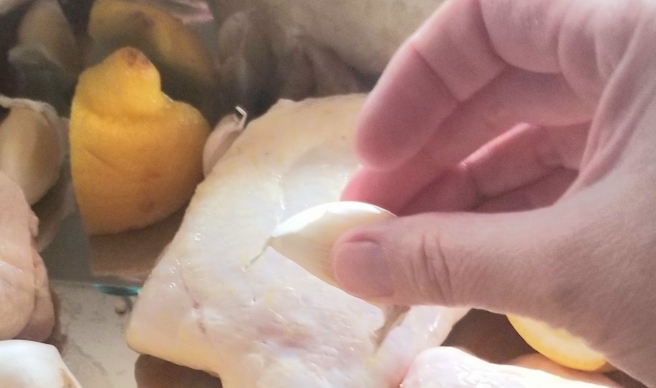
Pour the white wine and then the olive oil over the chicken, lemon and garlic pieces, and sprinkle over the dried thyme.
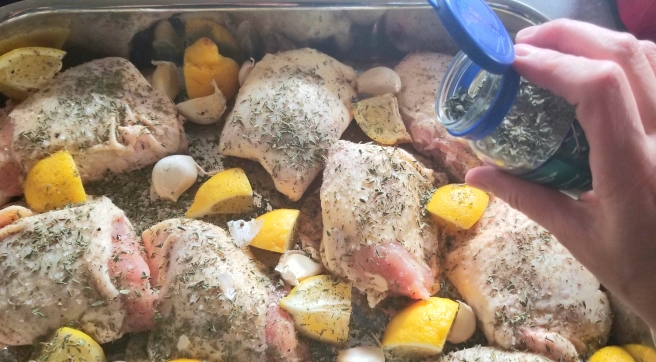
Season generously with salt and pepper, and dot the fresh thyme sprigs around the pan. Cover with foil, and roast for two hours at 375F.
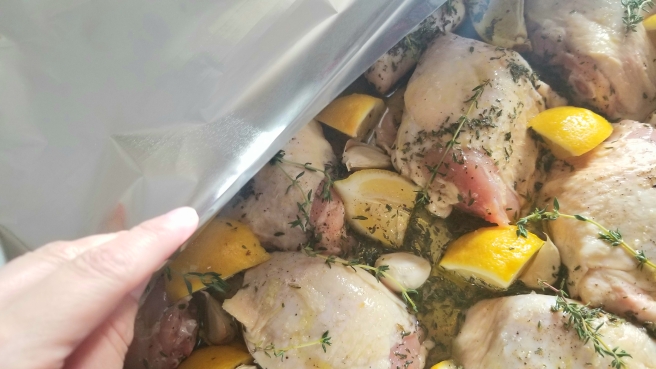
At the 2-hour mark, turn the oven up to 450F and take the foil off the chicken. Roast another 30-45 minutes, until the chicken skin gets crispy and bronze and the garlic and lemon are steaming and caramelized. Serve with some sautéed mushrooms and ponder the philosophy of food.
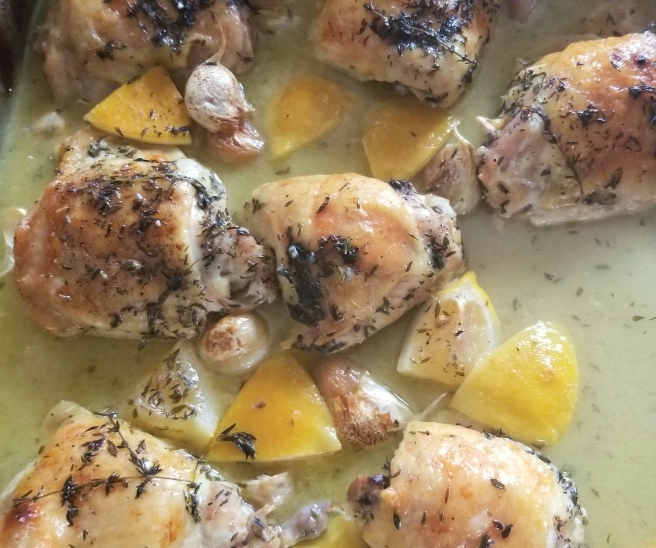

The book sounds fascinating and so unique. And the dish looks amazing as well as something that I can eat on my keto diet. So… it’s on the menu tonight. At least while on lockdown we can eat and read well. 🙂
LikeLike
oh yes it is completely appropriate for a keto meal. I didn’t even think about that. Served with lemon-zested asparagus, it’s a perfect meal. The book itself is wonderful, though dense, but the food descriptions are worth it.
LikeLiked by 1 person
I have asparagus in the fridge. Yum. Thanks for the book recommendation too.
LikeLiked by 1 person
Anytime. It’s a good time for everyone to catch up on their reading and cooking.
LikeLiked by 1 person
…hmm. Though it’s easy to get the Welsh thing, at some point I need to return and see-experience more for myself, that 1/4th of the ancestry in my blood…. another good post, (maybe a little short, but maybe that’s in response to the book,) another very good recipe. Cappuccino and cornetto, pizza margherita and beer, cannellini cooked in black cabbage root broth, risotto and saffron, bollito and mostarda, melted raclette and mountain fingerling potatoes….
LikeLiked by 1 person
I’m with you on the raclette with potatoes! I actually think you would very much enjoy this book. I enjoyed it too; it was just a little dense in parts for me but the delicious food descriptions bring to mind many of your food writings.
LikeLiked by 1 person
The “I myself…” in your example line says it all! Love your roast chicken with herbs and lemon, and of course garlic. Reminds me of an “herbs of Provence” chicken, which is always fantastic.
LikeLike
Another tempting and very satisfying review! Oh, the books I need to read!!!
LikeLiked by 1 person
Thank you, Cecilia. This one was actually very enjoyable, albeit somewhat long winded. The descriptions of food and the very subtle malice from the main character make it well worth the time.
LikeLike
You had me at lemons haha
LikeLiked by 1 person
Right? Lemons make anything better!
LikeLiked by 1 person
They’re my fav
LikeLiked by 1 person